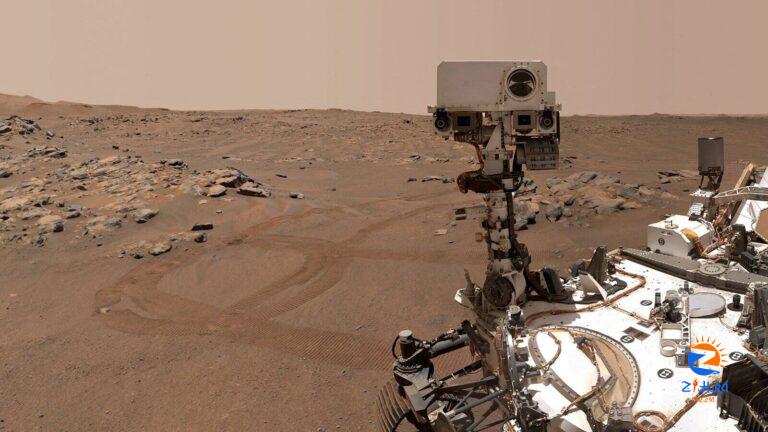
[ad_1]
The agency said it will issue a formal request call on April 16 to various NASA facilities, laboratories, and aerospace companies for proposals, the report said. NASA is seeking ways to streamline the Mars Mission programme amid technical challenges, budget limitations, and escalating expenses.
Alternative Plans Expected by Late Fall
During a conference call with journalists, agency representatives said they anticipate receiving alternative proposals for review by late autumn or early winter.
Nicky Fox, Associate Administrator at NASA, said that the programme overhaul would prioritise innovation and reliable technology to reduce risks and costs associated with the project.
“The overhaul would focus on innovation and proven technology, rather than on huge new technological leaps, as a way of reducing development time, risks and costs,” Fox told reporters.
Addressing Budgetary and Schedule Issues
Following an independent review commissioned by NASA in September 2023, it was evident that the Mars sample return programme encountered hurdles due to unrealistic budget and schedule expectations from its inception.
The review also noted organisational inefficiencies and ineffective leadership structures within the mission.
The initiative to revamp the Mars sample return strategy comes amidst significant budget cuts imposed by Congress on space programmes this year. These cuts have led to substantial layoffs at NASA’s Jet Propulsion Laboratory (JPL), which plays a crucial role in the Mars mission.
Challenges and Objectives of Mars Sample Return
The Perseverance rover, developed by JPL, has been gathering mineral samples from the Jezero Crater on Mars since 2021. These samples are sealed in tubes for future analysis, aiming to uncover potential signs of ancient microbial life.
Initially slated for launch in 2027-28 with a return expected in the early 2030s, the Mars sample return mission faced cost projections of $5-7 billion. However, recent designs indicated that costs could skyrocket to as much as $11 billion, with a potential return date pushed beyond 2040.
“We want to get every new and fresh idea that we can. The bottom line is an $11 billion budget is too expensive, and a 2040 return date is too far away,” NASA chief Bill Nelson said.
Nelson emphasised that maintaining such high funding levels would impede progress on other significant scientific endeavours, including missions to Saturn’s moon Titan, exploration of Venus, and the survey of near-Earth objects.
“These are folks who can figure out rather difficult things,” he said, expressing hope that industry partners would find a solution.
Perseverance Rover Hard At Work on Mars
NASA’s Perseverance rover has successfully collected 24 core samples in tubes since its touchdown in 2021 at Mars’ Jezero Crater, a site rich in ancient river delta deposits. The primary aim is to amass over 30 samples to meticulously search for potential traces of ancient Martian life, as per an AP report.
The space agency is striving to transport at least a portion of these gathered samples back to Earth and this undertaking necessitates an expensive multi-step process. From journeying to Mars to retrieve the tubes, and then launching from the planet, to later rendezvous with another spacecraft tasked with ferrying the samples back to Earth, would be an expensive affair, the AP report noted.
Fox refrained from giving a definitive timeline for the samples’ return, adding that such details would be outlined in forthcoming proposals. “We’ve never launched from another planet, and that’s actually what makes Mars sample return such a challenging and interesting mission,” she said.
Scientists eagerly anticipate the opportunity to scrutinise Martian samples within their own laboratories, surpassing the limited capabilities of spacecraft-based analyses conducted on the red planet. Rigorous examination is imperative to validate any indications of microbial life dating back billions of years to when Mars was potentially habitable due to flowing water, according to NASA.
Moreover, these samples will play a pivotal role in informing NASA’s decisions regarding future human exploration of Mars in the 2040s, Nelson added.
Competition With China
China’s Tianwen-3 Mars sample return mission is progressing towards a simpler “grab-and-go around 2030” which could make it the first nation to achieve this milestone, as per state media reports.
Although China’s mission is simpler and will only collect samples from the immediate vicinity of its landing site, being the first to retrieve rocks from another planet would represent a significant geopolitical achievement.
China’s 2030 mission to the Moon could also position it as the next nation to deploy crew there, potentially preceding the NASA-led Artemis 3 landing.
Speaking to AFP, former top NASA official and Stanford professor G Scott Hubbard said this would be a wake-up call for Western nations. “If they are able to return samples from Mars before the US does, even if it’s a grab sample, which is nearly scientifically worthless, that is much more like a Sputnik moment,” he added.
(With inputs from AFP, AP and Reuters)
Unlock a world of Benefits! From insightful newsletters to real-time stock tracking, breaking news and a personalized newsfeed – it’s all here, just a click away! Login Now!
Download The Mint News App to get Daily Market Updates.
Published: 17 Apr 2024, 12:26 PM IST
[ad_2]